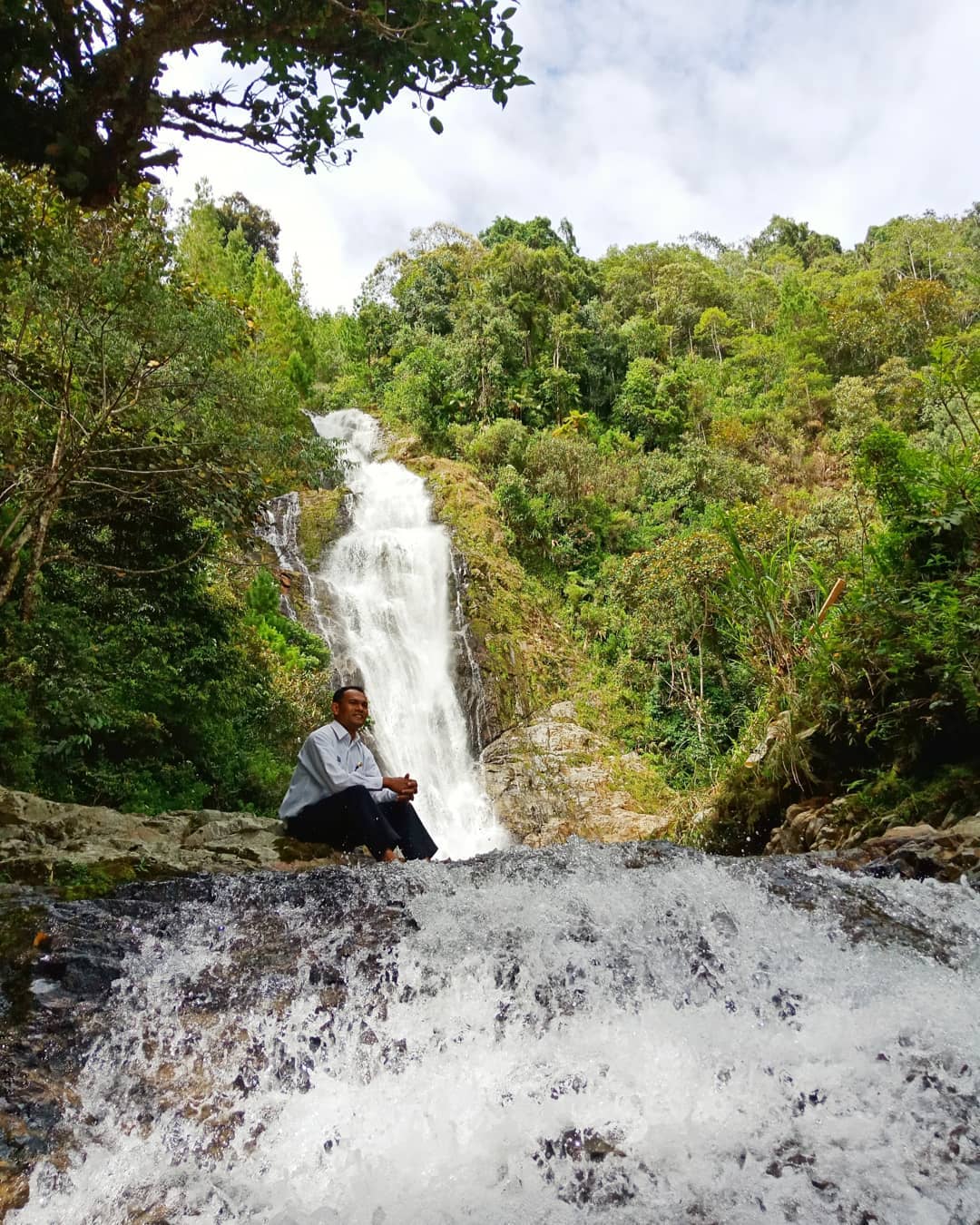
Tana Toraja Eternal Abode of the Kings
Tana Toraja Eternal Abode of the Kings! Indonesia tourism detination is not only Bali, Yogyakarta or Lombok. Toraja is a curtural tourism destination nested at top the mountainous region southwest of South Sulawesi, Indonesia. The land of Toraja is home to the Toraja ethnic group who still clings to the age-old lifestyle of the Austronesians similar to the Nias culture, one of the similarities is the architectural design of traditional houses or known as tongkonan typically constructed amid lush bamboo vegetation atop hilly areas.
The front of the house is customarily decorated with dozens of buffalo horns arranges vertically. Toraja’s natural splendor displays steep corky cliffs, the place for burial sites unique to Tana Toraja. Parched above the hills, stone caves are turned into burial ground where coffins are laid out according to lineage.
The people of Toraja believe that their ancestors descended from heaven and made the mountainous region into their home 20 generations ago. Torajan culture adheres to animistic beliefs manifested in rituals that celebrate death and afterlife.
At the villave of Ke’te Kesu, traditional houses, rice barns and megaliths are commonly found. Here is where you can also find wooden caskets hanging on the side of cliffs with tau-tau or wood-carved effigies placed in the fenced stone graves. Local villagers are excellent wood carvers and Ke’te Kesu is the perfect place to shop for Torajan souvenirs. At Batu Tumonga, some 56 menhirs or standing stones form a circle with four trees at the center.
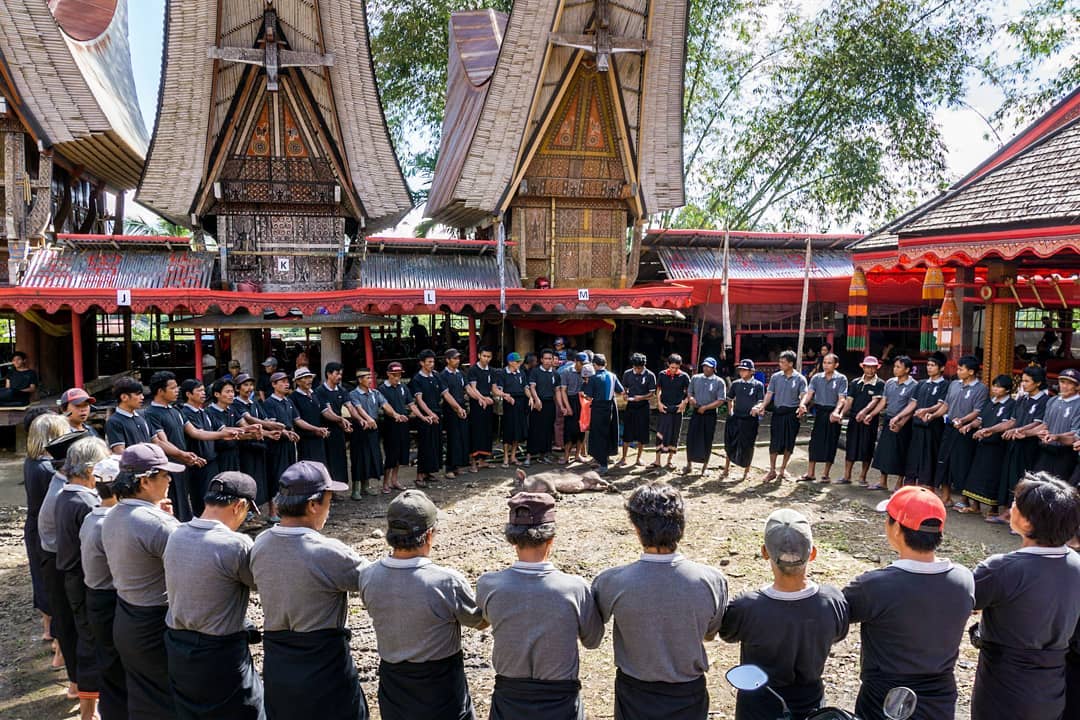
Tana Toraja Best Tourist Attractions. One thing that makes the Tana Toraja region so special is the believe of the local people towards life and death. When a person dies, this is seen as a temporary illness that will be followed by a second eternal life. The deceased person is embalmed and can remain in their own house for months or even years. During this time, clothes are changed, and food and drinks are served. via @koenboelrijkphoto
Key Takeaways
Best Tourist Attractions in Tana Toraja
There are many tourist attractions in Tana Toraja. Some best of tourist attractions in Tana Toraja is listed here:
1. Rambu Solo Ritual, Tana Toraja Funeral Ceremony
Another traditional tourist destinations that are popular in Tana Toraja are Rambu Solo Ritual or Ceremony. If the Ma’nene tradition is a ritual “cleansing” the remains of the ancestors, Rambu Solo Ceremony is differeent. It is a special burial ritual for people who have died. Well, tana toraja funeral is bit unique.

Rambu Solo Ritual, Tana Toraja Funeral Ceremony via @irfaanrf
Tana Toraja is well-known as one of the regions in Indonesia that still has strong belief in mystical and mystical things. Therefore, the Tana Toraja people have many cultures and traditions related to corpses, spirits, or other mystical things. This is what becomes an attraction for both local and foreign tourists to visit Tana Toraja. One of many interestin thing is unique Tana Toraja funeral ceremony.
For the Tana Toraja people, people who have died are considered to be like people who are sick. On the basis of these beliefs, those who have died still continue to be treated and treated like people who live one of them by providing food and drinks, cigarettes, betel, and various other offerings.
2. Londa Tomb
Tana Toraja has tourist attraction known as Londa, which is a tomb complex located on a rocky cliff. Londa has become one of the main tourist attractions in Tana Toraja that you must visit. Londa is located approximately 7 km south of Rantepao City. The city of Rantepao itself is a city that is the center of tourism and accommodation for tourists who come to Tana Toraja. This strategic location makes Londa can be visited with various types of transportation such as ojek, bemo, or even rental cars.

Tana Toraja has tourist attraction known as Londa, which is a tomb complex located on a rocky cliff. via @reyhanprmhs
Its location surrounded by mountains makes the atmosphere around Londa cool and tends to be rather cold. When entering the Londa area, you will feel a different feel. The combination of mystical nuances and cool weather tends to be cold.
Along the cliffs in the Londa burial complex, there are caves or holes that were deliberately made and carved to put the coffin containing the body. Not just any coffin containing a body can be placed inside the cave in this Londa. Usually, setting the coffin placement is adjusted to the family line.
Uniquely, in every cave or hole in a rock cliff a row of wooden statues called Tau-Tau is placed. This row of wooden statues is not an ordinary statue but a sculpture carved and carved in such a way as to resemble a deceased person placed in the cave.
3. Ma’nene Tradition Ritual
One of Interesting traditions in Tana Toraja which has become a popular tourist attraction for local and foreign tourists is the Ma’nene tradition. Ma’nene tradition is a tradition of remembrance of ancestors by cleaning and replacing the corpses of the ancestors of the Tana Toraja community. This tradition is specifically carried out by the Baruppu people who live in the interior of North Toraja.

Sequence of a family in Tana Toraja cleaning and dressing the mummy of their grandfather, Ma’Nene ritual.
For people in the Baruppu region, corpses or bodies of relatives are an inseparable part of living family members. In addition, the Baruppu community has the belief that even though the bodies have died, the spirits of the ancestors remain “alive” and supervise their descendants from other realms.
Therefore, every 3 years or around August when the harvest is over, “cleansing” is carried out on the bodies or bodies of their relatives. The trick is to remove the “mummy” of the body from the chest to be cleaned and replaced with new clothes. Not only are they dressed in new clothes, the bodies of these ancestors are also dressed neatly as if they were going to attend a party.
4. Kete Kesu
Kete Kesu is a tourist village in North Toraja Regency which is located about 4 km southeast of Ratenpao. The village that has become a tourist attraction is located nar the hills and rice fields so that the natural scenery presented is very green and beautiful. In Kete Kesu Village there is a traditional Toraja house complex called Tongkonan. This tongkonan is often a temporary storage place for bodies that have been wrapped in cloth before being buried.

This is Kete Kesu, a tourist village where we can see the traditional customs and life of the Toraja people! via @shaytheglow
In addition, at the top of the cliff of Kete Kesu hill, there are stone graves which are ancient relics that are thought to be hundreds of years old. In Toraja, coffins where corpses are stored are usually placed in certain stone caves without being buried in the ground. Therefore, not infrequently also coffins are also considered as tombs at the same time.
At the top of the cliff, there is a stone grave as well as a coffin that resembles a boat. In this tomb in the form of a boat there are skulls and bones of humans who have died tens to hundreds of years ago. At some cliff points, there are also various offerings consisting of cigarettes and various foods and drinks. That said, offerings presented in these graves contain snacks that are liked by those who have died during his lifetime.
5. Bori Parinding and Tarra Tree
Talking about the Tana Toraja, it is always interesting. Especially about Tana Toraja funeral ceremony, and the uniqueness of tomb type. Still in the Batutumonga region, precisely on the slopes of Mount Sesean, there are also ancient stone tombs, known as Bori Parinding.
Bori Parinding is located in Sesean and Lo’ko Mata Sub-districts in Sesean Suloara District. Bori Parinding is an ancient burial complex that has been used since 1717. Not all bodies can be buried in Bori Parinding. Only noble families who are descendants of Ramba alone can be buried in this ancient burial complex.
In Bori Parinding, there are also special tombs for babies who die. Strangely, this tomb is not on the rock cliffs like the typical tomb complex in Tana Toraja, but is located in a tree. The name is known as Tarra Tree. The area where Tarra trees are located is called Passiliran or Kambira Baby Grave. The tarra tree has been used as a tourist attraction in Tana Toraja.
If a baby of a Tana Toraja citizen dies, the body will be planted in the body of the Tarra tree. But, not all baby bodies can be buried in this tree. Only babies body whose teeth have not grown. The reason is, according to the Tana Toraja community’s belief, babies who are not teething are considered to be still holy.
6. Batutumonga
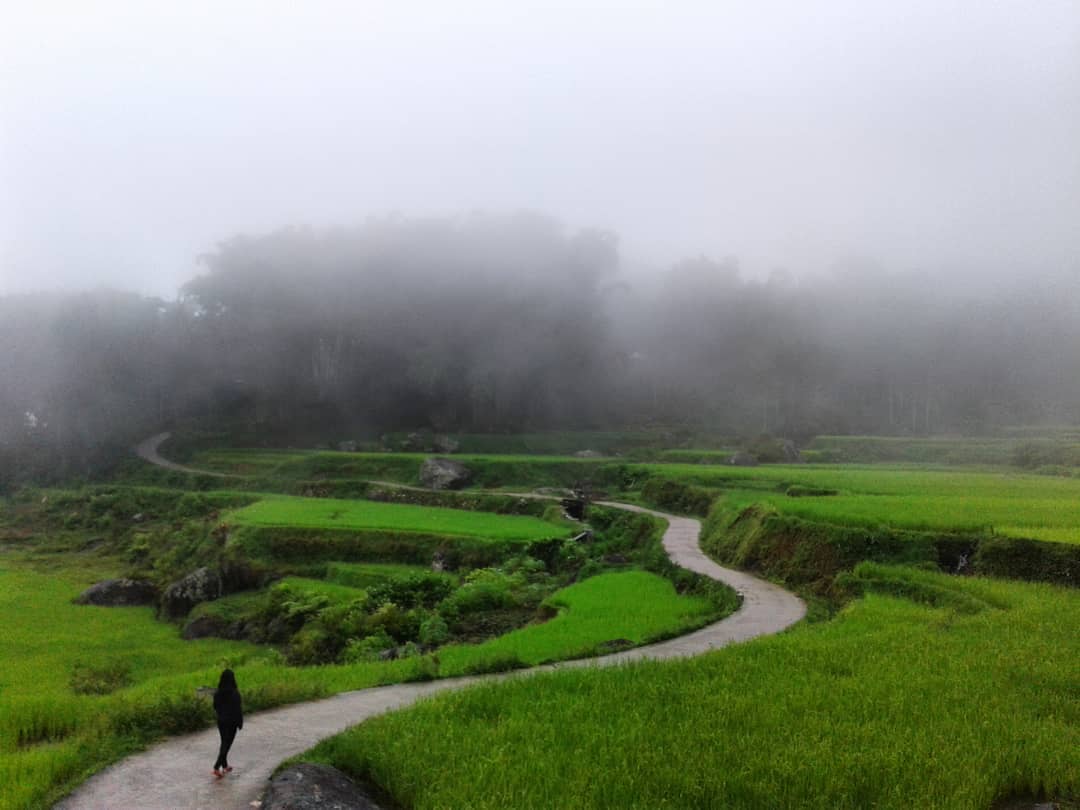
Come to Batutumonga in Tana Toraja if you want to experience what it is feel like inside the cloud! via @sintharane
Come to Batutumonga in Tana Toraja if you want to experience what it is feel like inside the cloud. Batutumonga is a region located on the slopes of Mount Sesean or about 24 km from Rantepao Town.
Mount Sesean itself is the highest mountain in Tana Toraja. While Batutumongga is locatend in the slope area. In Batutumonga, you can see the whole of Tana Toraja whose beauty looks so perfect. Also sometimes this place is covered by clouds, that is why you feel like insinde the cloud here.
7. Ne’Gandeng Museum
You must visit the Ne’Gandeng Museum when visiting Tana Toraja. NNe’Gandeng Museum is located in Palangi Village, Sa’dan Balusu District, Toraja. This museum is managed by Yayasan Keluarga Besar Ne’Gandeng.
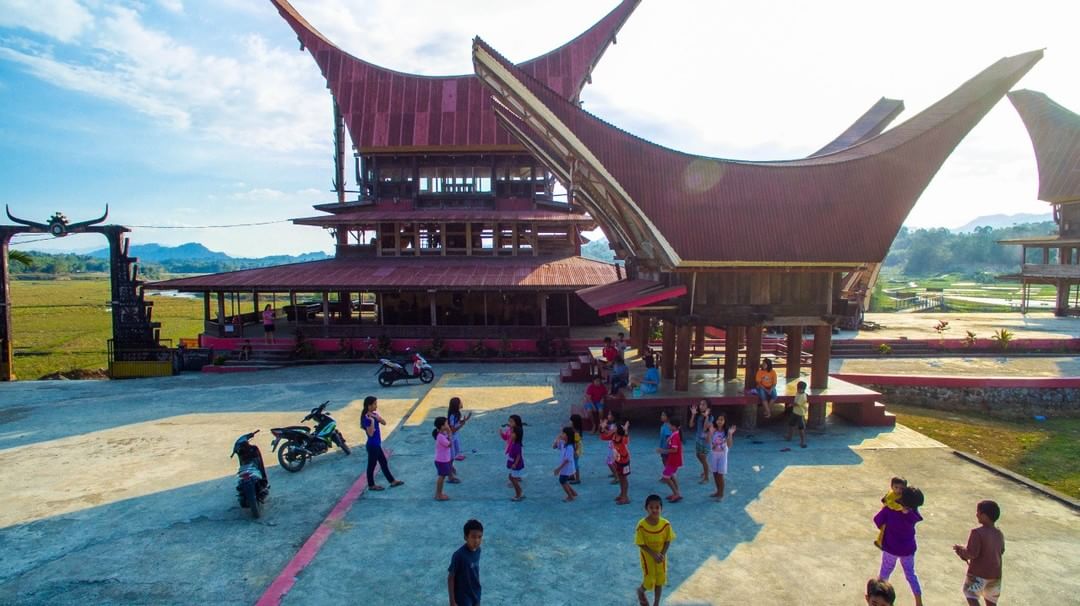
You must visit the Ne’Gandeng Museum when visiting Tana Toraja. it is an interesting museum in Toraja! via @museumnegandeng
Ne’Gandeng is one of the elders or ancestors in Tana Toraja who died on August 3, 1994. The history of Ne’Gandeng museum is started from Ne’Gandeng’s life it self. Together with his life. Ne’Gandeng is a person who is very caring and has more attention to the lives of the people around him.
Some time later, Ne’Gandeng passed away. Before used as a museum, this museum was the place for the Ne’Gandeng funeral procession. To remember the kindness of Ne’Gandeng, came the idea to build the Ne’Gandeng Museum. Also as a form of respect for the ancestors. The Toraja tribe is one of the tribes in Indonesia that highly respects its ancestors.
Since then, the construction of the museum continues. Until now, if you visit the Ne Museum, you will see huts in the form of traditional Toraja houses. This cottage is deliberately prepared as a place to rest and stay for families and guests who come to visit the tomb of Ne’Gandeng. This museum is also intended for Tana Toraja residents who also want to hold a funeral procession for their family members.
8. Ranteallo, Tana Toraja
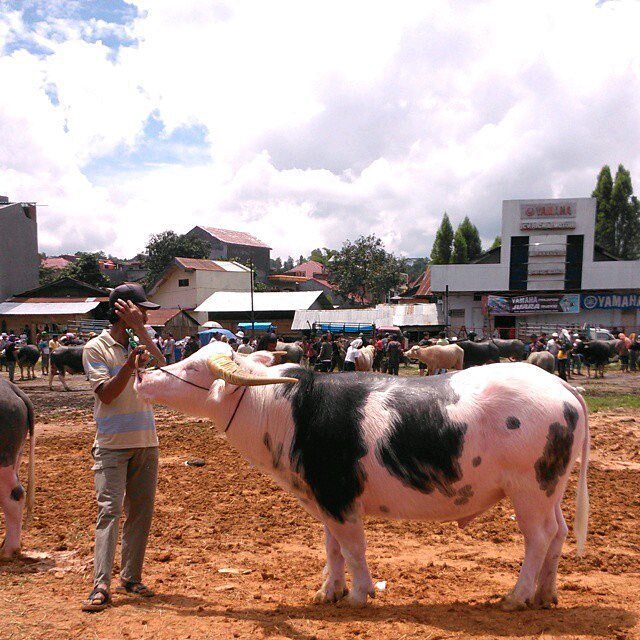
Tedong Saleko, a fantastic buffalo that is worth up to 1 billion rupiahs or around 68.000 USD!! via @visit_sulsel
Want to see yourself a fantastic buffalo that is worth up to 1 billion rupiahs or around 68.000 USD? Come to Ranteallo in Tana Toraja. In Ranteallo, there is a Toraja traditional house complex whose positions face each other.
Ranteallo itself is actually an area located in Tallunglipu District which is a residential area of citizens. Behind people’s houses, there are pig and buffaloes that are specially kept for sale if there are Toraja residents who will hold a traditional ceremony.
Pigs that are kept in Ranteallo have varying weight. There are also pigs that weigh around 200 kilograms and are valued at around Rp. 15 million. Not only pigs, you can also find striped buffalo here.
9. Sarambu Assing Waterfall
Sarambu Assing Waterfall is located in Lembang Patongloan, Bittuang District, Tana Toraja Regency, this waterfall has an altitude of around 40 meters.
The source of this waterfall comes from the mountains and forests around the location of the waterfall. To reach the location of the waterfall is also not so difficult. car an motorcycle can be used to visit Sarambu Assing Waterfall.
Unfortunately, this waterfall tourist attraction has not been developed to its full potential. It is still so natural with little facilities. In fact, the potential of the region where the waterfall is located is very large to be processed into a promising tourist attraction.
10. Pallawa Tana Toraja
Come to Pallawa, Tana Toraja. You will see directly Tongkonan House which is the home where the bodies of the Toraja Ancestore are kept before being buried. This place is so interesting!
From Rantepao City which is the capital of Toraja Regency, you need to travel about 12 km to get to Pallawa. At Pallawa, there is a line of Tongkonans whose buildings are in the form of traditional Toraja houses with curved roofs like boats and consisting of bamboo structures. At the front of the Tongkonan, there are several buffalo horns that have been dried and arranged neatly.
Looking at the inside of Tongkonan, there are several rooms including a room that is used as a bedroom, kitchen room, and a room that is provided for storing corpses or corpses during the Rambu Solo funeral procession.
Meanwhile, on the side of the Tongkonan there is a rice storage barn. For the Tana Toraja people, the house or Tongkonan is the symbol of the mother while the barn is the symbol of the father because the father is the land opener.
How To Go To Tana Toraja?
Accessibility and Direction: From Makassar, capitol city of South Sulawesi, take a bus ride to Ratepao situated 328 kilometers away or 6-8 hours of travel. At Rantepao, tourism facilities are available and serves as the starting point for exploring Tana Toraja.
Best Time to Visit: From April to September
Contact and Details: Tourism Information Services, Jl. Pau Pura, Rantepao, Sulawesi Selatan. Phone: (0423) 23369


